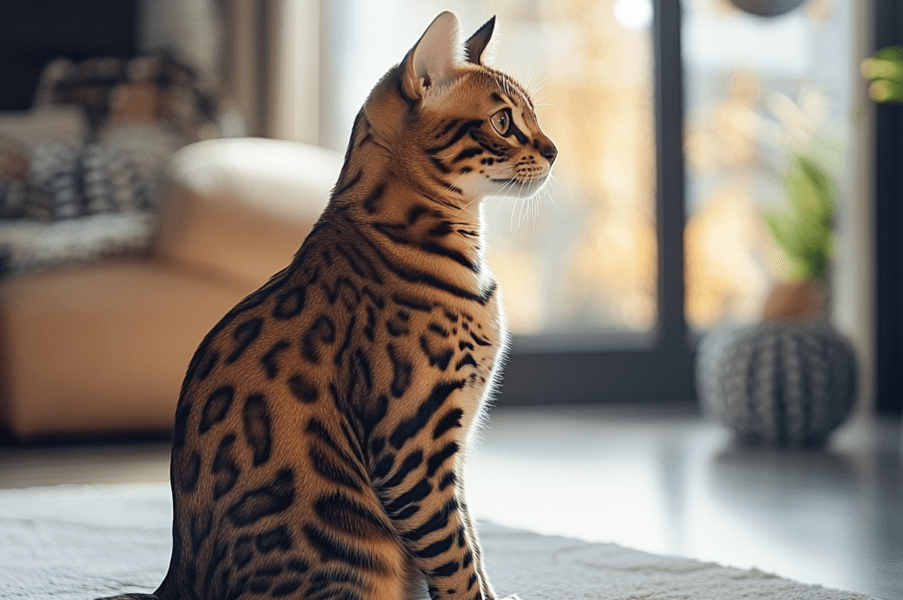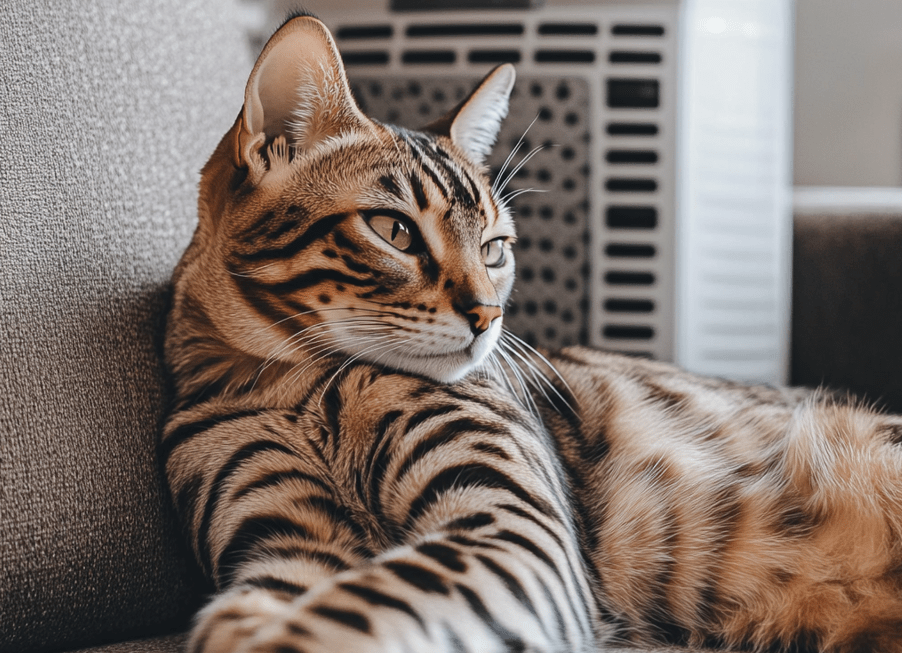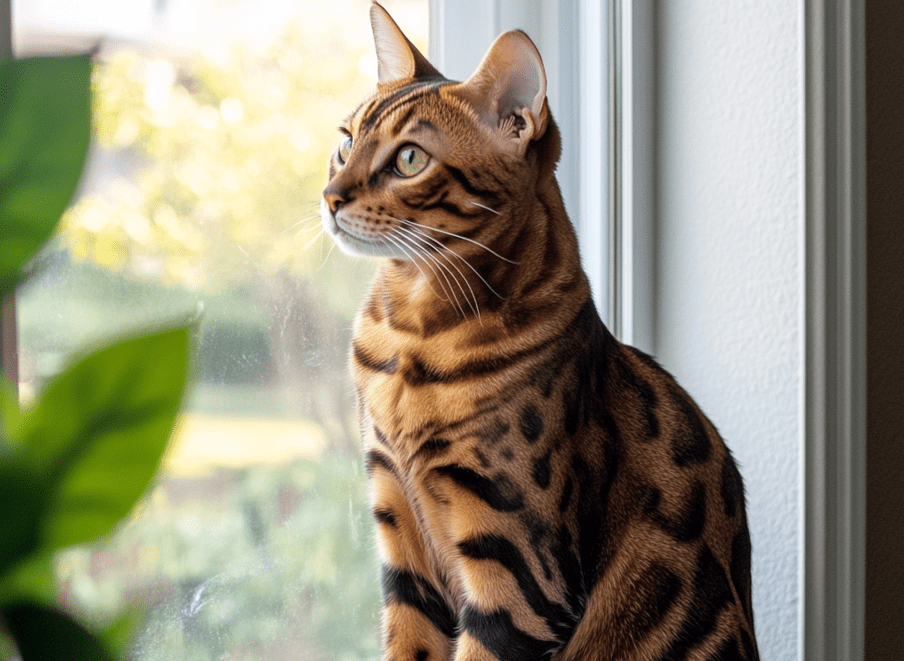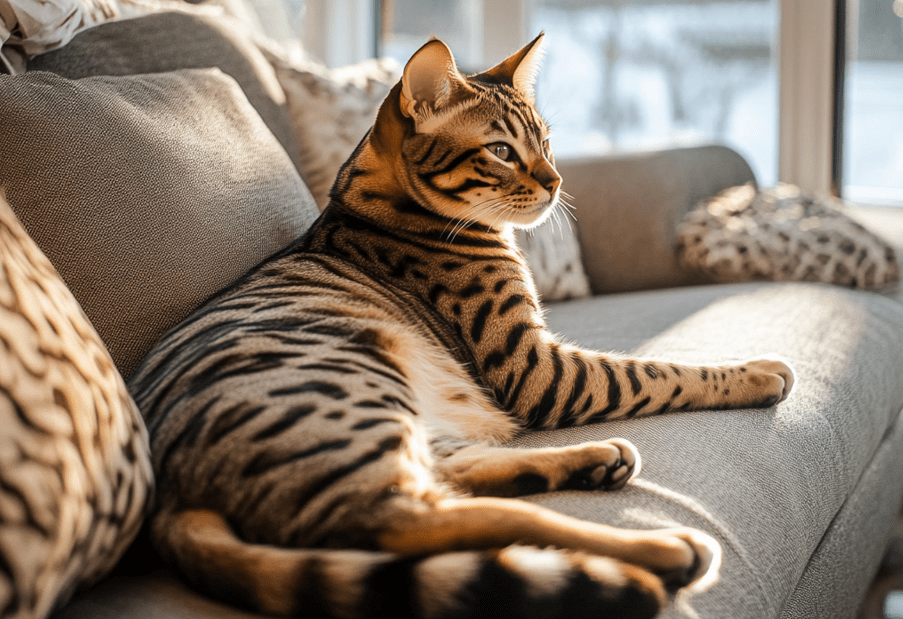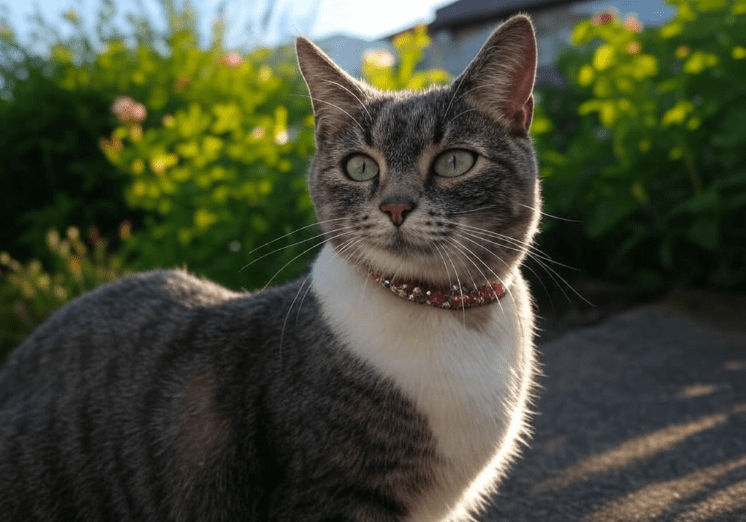
Bengal cats are energetic, curious, and adventurous, making an outdoor enclosure for your Bengal cat a perfect way to let them explore the outdoors safely. These enclosures, often called “catios” (cat patios), provide a secure space for your Bengal to enjoy fresh air, climb, and play without the risks of roaming free. This comprehensive guide will walk you through designing an outdoor enclosure tailored to your Bengal’s unique needs, ensuring safety, stimulation, and fun.
Whether you have a small balcony or a sprawling backyard, creating an outdoor enclosure for your Bengal cat can enhance their quality of life while giving you peace of mind. In this article, we’ll cover why Bengals benefit from outdoor enclosures, key design considerations, step-by-step setup instructions, and creative ideas to make the space a feline paradise. Let’s get started!
Why Bengal Cats Need an Outdoor Enclosure
Bengals are a high-energy breed with a wild streak, thanks to their Asian leopard cat ancestry. They thrive on exploration, climbing, and sensory stimulation, which an indoor-only environment may not fully satisfy. An outdoor enclosure for your Bengal cat offers numerous benefits:
Safe Exploration: Protects your Bengal from dangers like traffic, predators, or getting lost while allowing them to experience the outdoors.
Physical Exercise: Climbing, jumping, and running in an enclosure keep Bengals fit and prevent obesity.
Mental Stimulation: Exposure to sights, sounds, and smells (like birds or plants) engages their curious minds.
Stress Relief: Outdoor time reduces boredom and destructive behaviors, such as scratching furniture or excessive vocalization.
Enrichment: Enclosures provide a dynamic environment to satisfy Bengals’ hunting and stalking instincts.
Without a safe outdoor space, Bengals may become frustrated or attempt to escape, putting them at risk. A well-designed enclosure is a win-win, keeping your cat happy and your home intact.
Planning Your Bengal Cat’s Outdoor Enclosure
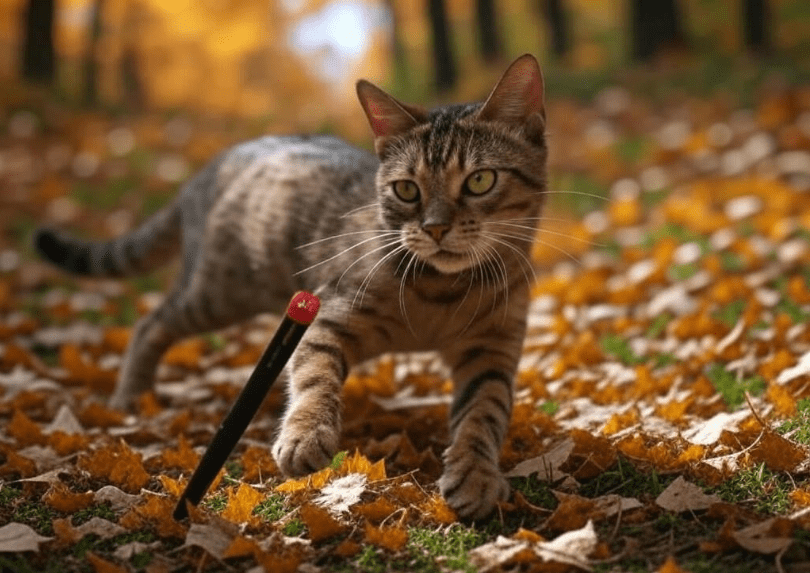
Designing an outdoor enclosure for your Bengal cat requires careful planning to ensure safety, functionality, and enjoyment. Here’s how to start:
1. Assess Your Space
Evaluate your available outdoor area to determine the enclosure’s size and type:
Backyard: Ideal for large, freestanding enclosures or tunnels.
Balcony or Patio: Perfect for compact catios or window-attached units.
Small Garden: Suitable for modular or portable enclosures.
Urban Setting: Consider window boxes or vertical enclosures for apartments.
Measure the space and check for potential hazards, like sharp edges, toxic plants, or gaps where your Bengal could escape.
2. Set a Budget
Enclosures can range from $100 for DIY setups to $2,000+ for custom designs. Factor in costs for:
1.Materials (wood, wire mesh, netting)
2.Structural elements (posts, roofing)
3.Enrichment features (shelves, toys, perches)
4.Weatherproofing (tarps, sealants)
5.Professional installation (if needed)
3. Understand Your Bengal’s Needs
Every Bengal is unique, so tailor the enclosure to their personality:
Climbers: Add tall perches, shelves, or trees.
Hunters: Include tunnels or hiding spots for stalking.
Loungers: Provide comfy beds or hammocks for sunbathing.
Playful Cats: Incorporate toys or interactive elements like dangling ropes.
4. Check Local Regulations
Before building, verify:
Zoning Laws: Some areas restrict outdoor structures.
HOA Rules: Homeowners’ associations may have guidelines.
Building Permits: Large enclosures may require permits.
Neighbor Considerations: Ensure the enclosure doesn’t obstruct views or cause disputes.
Key Components of an Outdoor Enclosure
A successful outdoor enclosure for your Bengal cat combines safety, durability, and enrichment. Here are the essential elements:
1. Secure Framework
The structure must be escape-proof and predator-proof:
Materials: Use sturdy wood, metal, or PVC for the frame. Avoid flimsy plastics that Bengals can chew or break.
Mesh or Netting: Choose galvanized wire mesh (1-inch or smaller gaps) or heavy-duty cat netting to prevent escapes and keep out wildlife.
Anchoring: Secure the enclosure to the ground with stakes or concrete for freestanding units, or attach it to walls for balcony setups.
2. Weather Protection
Bengals need shelter from the elements:
Roofing: Use solid roofing (wood, polycarbonate) or slanted tarps to protect from rain and sun.
Shade: Include shaded areas with fabric canopies or natural cover like trees.
Drainage: Ensure the floor (grass, gravel, or tiles) drains well to avoid puddles.
Insulation: For cold climates, add insulated shelters or heated beds.
3. Enrichment Features
Make the enclosure engaging with:
Climbing Structures: Shelves, ramps, or cat trees for vertical exploration.
Tunnels: PVC pipes or fabric tunnels for stalking and hiding.
Perches: High platforms for bird-watching or napping.
Toys: Dangling toys, balls, or feather wands to spark playas
Scratching Posts: Sisal-covered posts for claw maintenance.
Plants: Pet-safe plants like catnip or wheatgrass for sensory enrichment.
4. Access Points
Ensure easy access for you and your Bengal:
Cat Door: Install a lockable cat flap connecting the enclosure to your home for independent access.
Human Door: Include a full-sized door or hatch for cleaning and maintenance.
Windows: Add mesh-covered windows for airflow and views.
5. Safety Features
Prioritize safety with:
Escape-Proofing: Check for gaps, loose mesh, or climbable surfaces that could lead to escapes.
Predator Protection: Reinforce the enclosure against raccoons, hawks, or stray dogs.
Non-Toxic Materials: Use pet-safe paints, sealants, and plants.
Supervision: Monitor your Bengal during initial use to ensure they’re comfortable and safe.
Step-by-Step Guide to Designing an Outdoor Enclosure
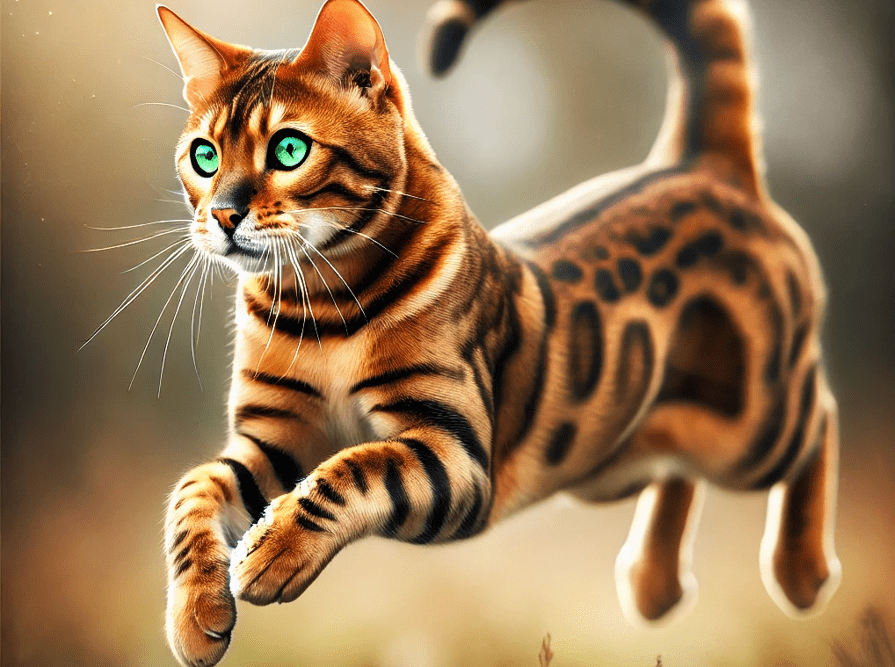
Follow these steps to create a safe and stimulating outdoor enclosure for your Bengal cat:
Step 1: Design the Layout
-
Sketch a blueprint based on your space and Bengal’s needs.
-
Decide on the enclosure type: freestanding, attached (e.g., to a window), or modular.
-
Plan for key features like perches, tunnels, and shelters.
Step 2: Gather Materials
-
Purchase framing materials (wood, metal, PVC).
-
Get secure mesh or netting (galvanized steel or UV-resistant cat netting).
-
Collect enrichment items (shelves, toys, scratching posts).
-
Buy weatherproofing supplies (tarps, sealants, roofing).
Step 3: Build the Structure
-
Frame: Construct a sturdy frame using wood or metal posts. Ensure it’s level and anchored.
-
Enclosure: Attach mesh or netting tightly, securing it with staples, screws, or zip ties. Double-check for gaps.
-
Roof: Install a solid or slanted roof to protect from weather.
-
Flooring: Use natural grass, gravel, or tiles, ensuring good drainage.
Step 4: Add Enrichment
-
Install climbing shelves, perches, or cat trees at varying heights.
-
Add tunnels, toys, and scratching posts for play.
-
Place pet-safe plants or grass patches for sensory stimulation.
-
Include a cozy bed or hammock for resting.
Step 5: Install Access Points
-
Add a cat door or flap for your Bengal to enter and exit.
-
Include a human-sized door or hatch for maintenance.
-
Ensure all access points are secure and lockable.
Step 6: Safety Check
-
Inspect the enclosure for sharp edges, loose mesh, or weak spots.
-
Test stability by applying pressure to the frame and climbing structures.
-
Remove any toxic plants or materials from the area.
Step 7: Introduce Your Bengal
-
Let your Bengal explore the enclosure under supervision.
-
Use treats, toys, or catnip to make the space inviting.
-
Gradually increase their time in the enclosure as they adjust.
Creative Ideas to Enhance the Enclosure
Make your outdoor enclosure for your Bengal cat a feline wonderland with these ideas:
Themed Design: Create a jungle theme with vines, logs, and pet-safe plants to mimic their wild roots.
Vertical Maze: Build a multi-level maze with ramps, tunnels, and platforms for climbing.
Water Feature: Add a small pet fountain for Bengals who love water play.
Bird-Watching Station: Place a perch near a mesh window for safe wildlife observation.
Nighttime Glow: Use solar-powered LED lights or glow-in-the-dark toys for evening play.
Seasonal Touches: Add cooling mats in summer or heated beds in winter for comfort.
Maintaining the Outdoor Enclosure
Regular upkeep keeps the enclosure safe and appealing:
Cleaning: Remove debris, fur, or waste weekly. Hose down flooring and wipe surfaces with pet-safe cleaners.
Mesh Inspection: Check for tears, rust, or loose netting monthly and repair promptly.
Toy Rotation: Swap out toys every few weeks to maintain your Bengal’s interest.
Weatherproofing: Reapply sealants or replace tarps annually to protect against wear.
Plant Care: Trim pet-safe plants and remove any that show signs of toxicity or overgrowth.
Safety Tips for Outdoor Enclosures
Safety is paramount when designing an outdoor enclosure for your Bengal cat:
Supervise Initially: Watch your Bengal during their first few sessions to ensure they’re comfortable and can’t escape.
Lock Access Points: Use secure locks on cat doors to prevent escapes or intrusions.
Monitor Weather: Bring your Bengal indoors during extreme heat, cold, or storms.
Check for Pests: Regularly inspect for insects, rodents, or other pests that could harm your cat.
Emergency Plan: Keep a pet first-aid kit and contact info for a vet nearby in case of accidents.
DIY vs. Professional Enclosures
You can build an enclosure yourself or hire a professional. Here’s a comparison:
DIY Enclosures
Pros: Cost-effective ($100–$500), customizable, satisfying to build.
Cons: Time-consuming, requires construction skills, may need frequent repairs.
Best For: Handy owners with small-to-medium spaces and basic designs.
Professional Enclosures
Pros: High-quality materials, expert installation, long-lasting ($1,000–$5,000).
Cons: Expensive, less customizable, may require permits.
Best For: Large or complex designs, urban settings, or owners with limited time.
Tip: If DIY-ing, use online tutorials or pre-made kits (e.g., from Catio Spaces) for guidance. For professional builds, hire companies specializing in catios.
Troubleshooting Common Issues
Here are solutions to potential challenges:
My Bengal won’t use the enclosure: Add more enrichment (toys, perches) or use treats to create positive associations. Ensure the space feels safe and inviting.
The enclosure is too exposed: Add more shade, roofing, or privacy screens to make it cozier.
Maintenance is overwhelming: Simplify the design with easy-to-clean surfaces and fewer plants.
Neighbors complain: Discuss the enclosure’s purpose and ensure it’s visually unobtrusive with attractive materials.
My Bengal tries to escape: Reinforce mesh, add inward-angled netting at the top, and supervise closely.
Conclusion
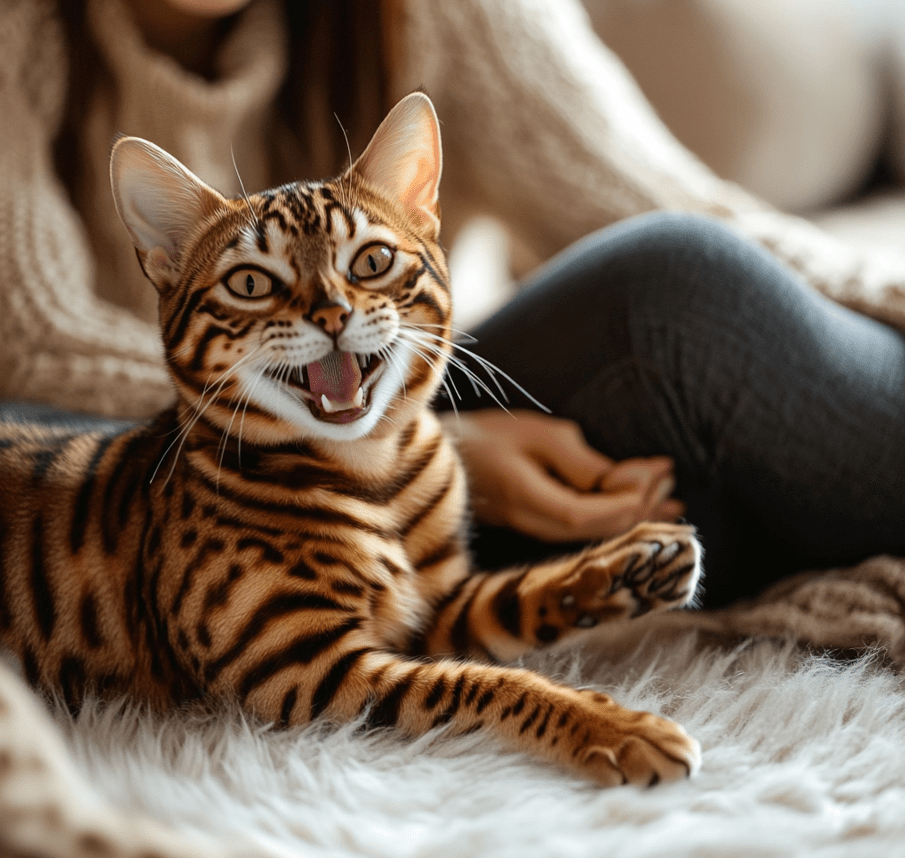
Designing an outdoor enclosure for your Bengal cat is a rewarding way to enrich their life while keeping them safe. By planning carefully, incorporating safety features, and adding engaging elements like perches, tunnels, and toys, you can create a secure outdoor haven that satisfies your Bengal’s wild instincts. Whether you opt for a DIY catio or a professional build, this guide provides everything you need to make the enclosure a success.
Start small, observe your Bengal’s preferences, and expand the setup with creative touches to keep them entertained. With a well-designed outdoor enclosure for your Bengal cat, you’ll give them the best of both worlds—safe outdoor adventure and the comfort of home. Happy building!

